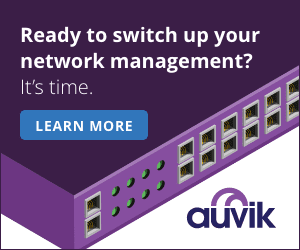Can Digital Infrastructure Companies Help Foster Educational Equity?


Zayo’s Michael McKerley offers insights on whether digital infrastructure companies can help foster educational equity. This article originally appeared on Solutions Review’s Insight Jam, an enterprise IT community enabling the human conversation on AI.
In rural America, an invisible barrier stands between forty-two million people and the digital opportunities many of us take for granted. Lacking access to high-speed internet, students in these areas are caught on the wrong side of the digital divide. While urban students use advanced technologies to enhance their learning, their rural peers often make do with limited resources, struggling to keep up in an increasingly connected world.
In this landscape, digital infrastructure providers are the key to driving change. As companies equipped with the latest technology, they are well-positioned to overcome barriers, providing essential broadband connectivity that can bridge the digital divide. Their work is crucial in bringing about a new era of educational equity, ensuring that every student — whether in a city or a rural area — has the opportunity to learn and succeed.
Challenges and Solutions to Bridge the Digital Divide in Education
To effectively bridge the digital divide in education, digital infrastructure providers must tackle the challenges preventing equitable access to digital resources. Here’s a closer look at these areas and the network infrastructure solutions that can help bridge the digital divide in education.
Challenge 1: The Need for Middle Mile Infrastructure
Middle-mile infrastructure is essential for transmitting data between the internet backbone and local networks, though it is often underdeveloped in rural and remote areas. This gap significantly hinders the deployment of last-mile connectivity necessary for educational institutions. Without effective middle-mile infrastructure, efforts to expand broadband to underserved areas are severely constrained, impacting students’ access to digital learning resources and remote education.
Solution: Investing in middle-mile infrastructure is essential. According to a Federal Communications Commission (FCC) report, approximately $42.45 billion from the Broadband Equity, Access, and Deployment (BEAD) Program is designated to improve broadband infrastructure, with a notable focus on building last-mile infrastructure. Such investments enable service providers to significantly enhance the quality and reach of internet services that support modern educational needs in rural areas. Improved connectivity facilitates reliable access to online learning platforms, interactive educational tools, and distance learning programs, thereby closing the digital divide in education. Furthermore, public-private partnerships are vital in this initiative, merging government support with private-sector technological advancements to construct resilient and extensive networks essential for educational progress.
Challenge 2: The Need for More Security Within That Infrastructure
As digital networks expand within educational institutions, securing these systems is crucial due to the rising threat of cyberattacks endangering student data safety and educational systems’ integrity. Consider the impact on a student whose personal information is compromised or a teacher who cannot access teaching materials due to network issues. These breaches compromise individual privacy and disrupt educational processes, underscoring the urgent need for comprehensive cybersecurity measures to safeguard the entire school community.
Solution: Adopting reliable security protocols and technologies can improve cybersecurity. For instance, deploying advanced encryption methods, secure VPN services for remote access, and regular security audits can greatly enhance network security. Funding can also play a role; the Cybersecurity and Infrastructure Security Agency (CISA) has outlined significant grants for improving cybersecurity measures in critical infrastructure, including educational sectors. The new E-rate cybersecurity pilot program may also lead to broader eligibility and more federal funding for advanced cybersecurity services designed for schools and libraries. Digital infrastructure providers can use these resources to ensure their networks remain secure against evolving cyber threats.
Challenge 3: Better Access to Devices
Even with internet access, the lack of personal devices can hinder students from fully participating in digital learning. During the pandemic, many students in underprivileged areas did not have personal devices, forcing them to share limited resources or miss out on learning opportunities.
Solution: Device distribution programs such as the Emergency Connectivity Fund, established under the American Rescue Plan, are an effective strategy. This program has allocated over $7 billion for schools and libraries to purchase devices and internet services for students. By supporting and expanding such initiatives, digital infrastructure providers can ensure that the connectivity they deliver is matched by actual usage, thereby bridging the device gap efficiently.
Each of these solutions addresses the challenges of the digital divide and builds a foundation for a more inclusive and equitable digital future in education. By focusing on infrastructure, security, and device accessibility, digital infrastructure providers can significantly enhance the educational experiences for all students, particularly those in traditionally underserved communities.
Effective Broadband Deployment: A Case Study from Oklahoma
In Oklahoma, the Choctaw Nation’s experience with new broadband deployment showcases the practical benefits of expanding digital infrastructure into rural areas. Initially, the community faced significant challenges due to limited access to high-speed internet, which affected students’ educational outcomes. With the introduction of broadband, over 10,000 students gained access to online educational resources, which directly and positively impacted their learning.
This new access enabled students to take part in more advanced courses and distance learning options, leading to better academic results and higher graduation rates. Teachers could also integrate more digital tools into their curriculums, enhancing the learning experience and better-preparing students for future careers.
For digital infrastructure providers, the project in the Choctaw Nation illustrates the benefits of targeting underserved areas. Implementing digital infrastructure helps build community support, improves the provider’s reputation, and opens up new markets for business expansion. By focusing on these areas, providers can tap into new customer bases, offering significant growth opportunities.
Ultimately, investing in broadband expansion can provide substantial educational benefits and business opportunities. Network infrastructure providers should consider similar investments in other rural regions to reap significant social and economic returns.
Driving Forward a Digital Equity Agenda
As we move forward, digital infrastructure companies must leverage their expertise and resources to dismantle these barriers. This task is daunting, but it holds great potential—not only for the communities directly impacted but also for the providers themselves, who gain substantial value by making a tangible difference in the lives of rural students and educators.
With enhanced rural digital infrastructure, a teenager in a community of less than 100 people can participate in virtual classes led by leading experts in fields like renewable energy. Similarly, a teacher in a small town can access educational resources that were once exclusive to prestigious schools.
By tackling the multifaceted challenges of the digital divide, digital infrastructure providers have the power to reshape the educational landscape, bringing new opportunities to students who once faced insurmountable barriers and building a stronger, more connected future.




















